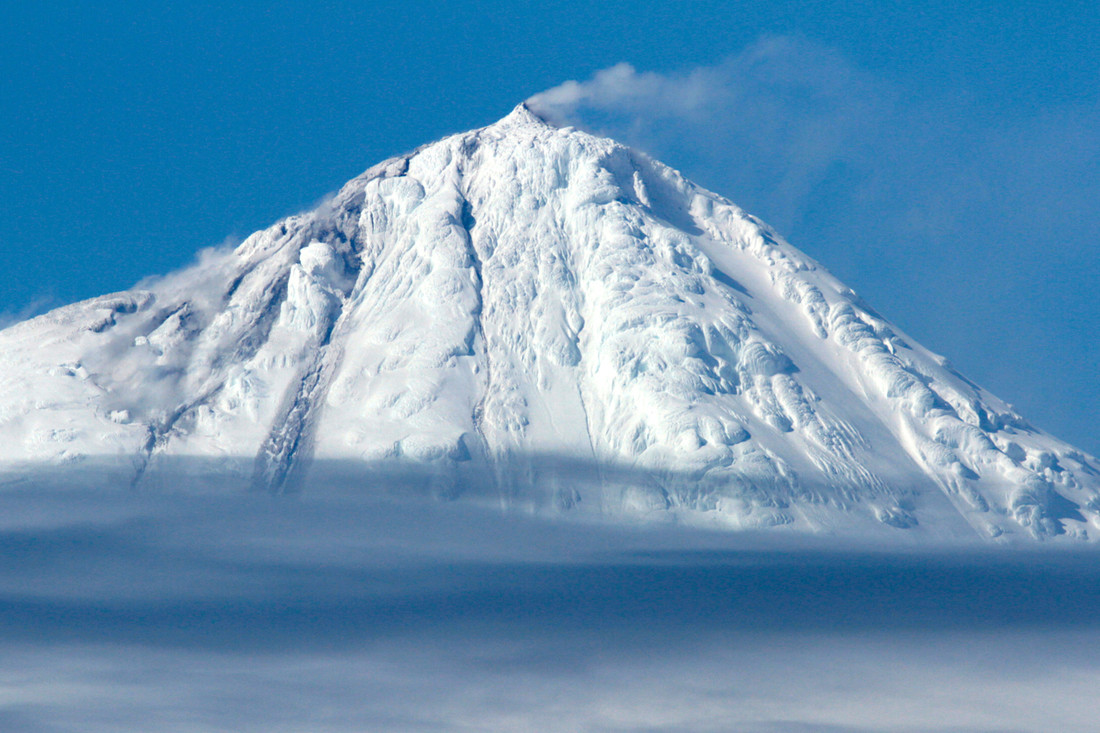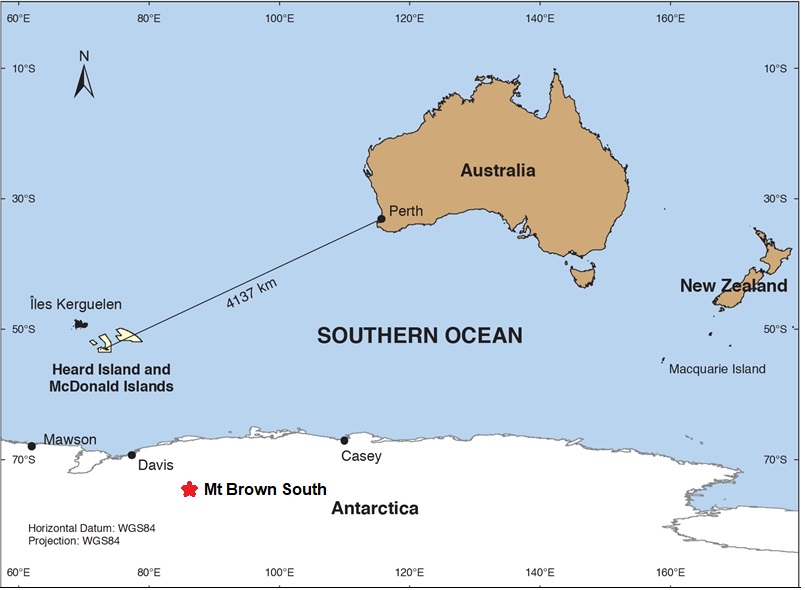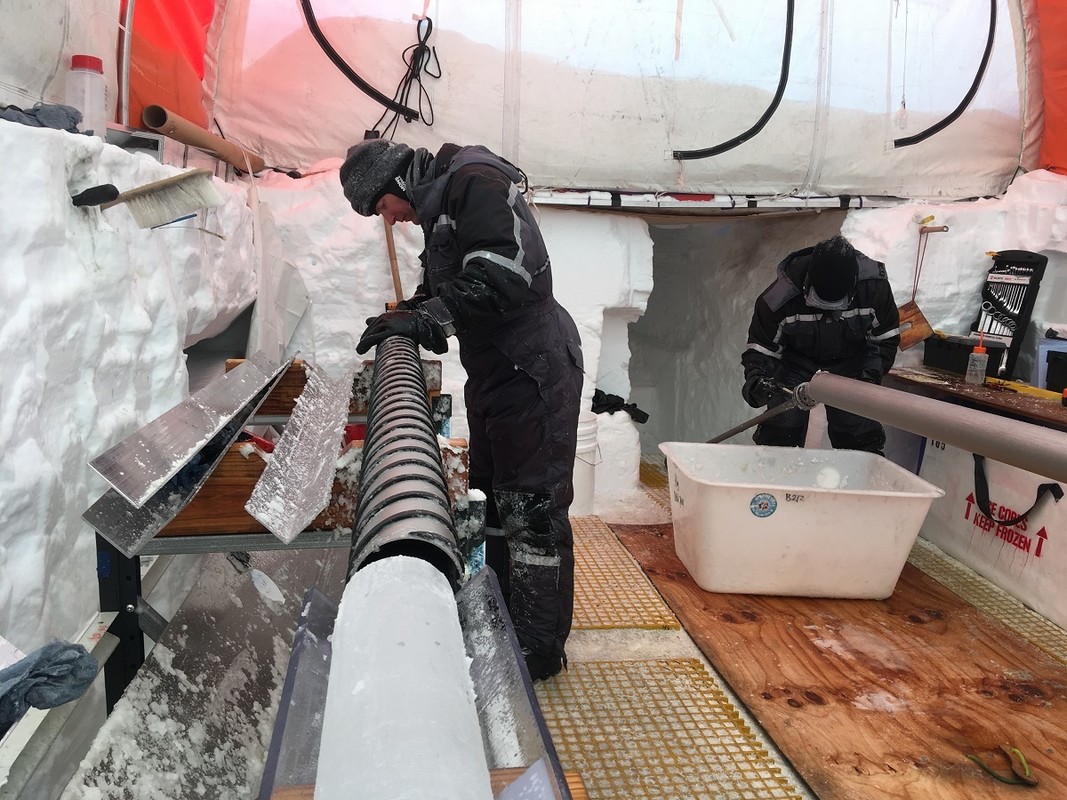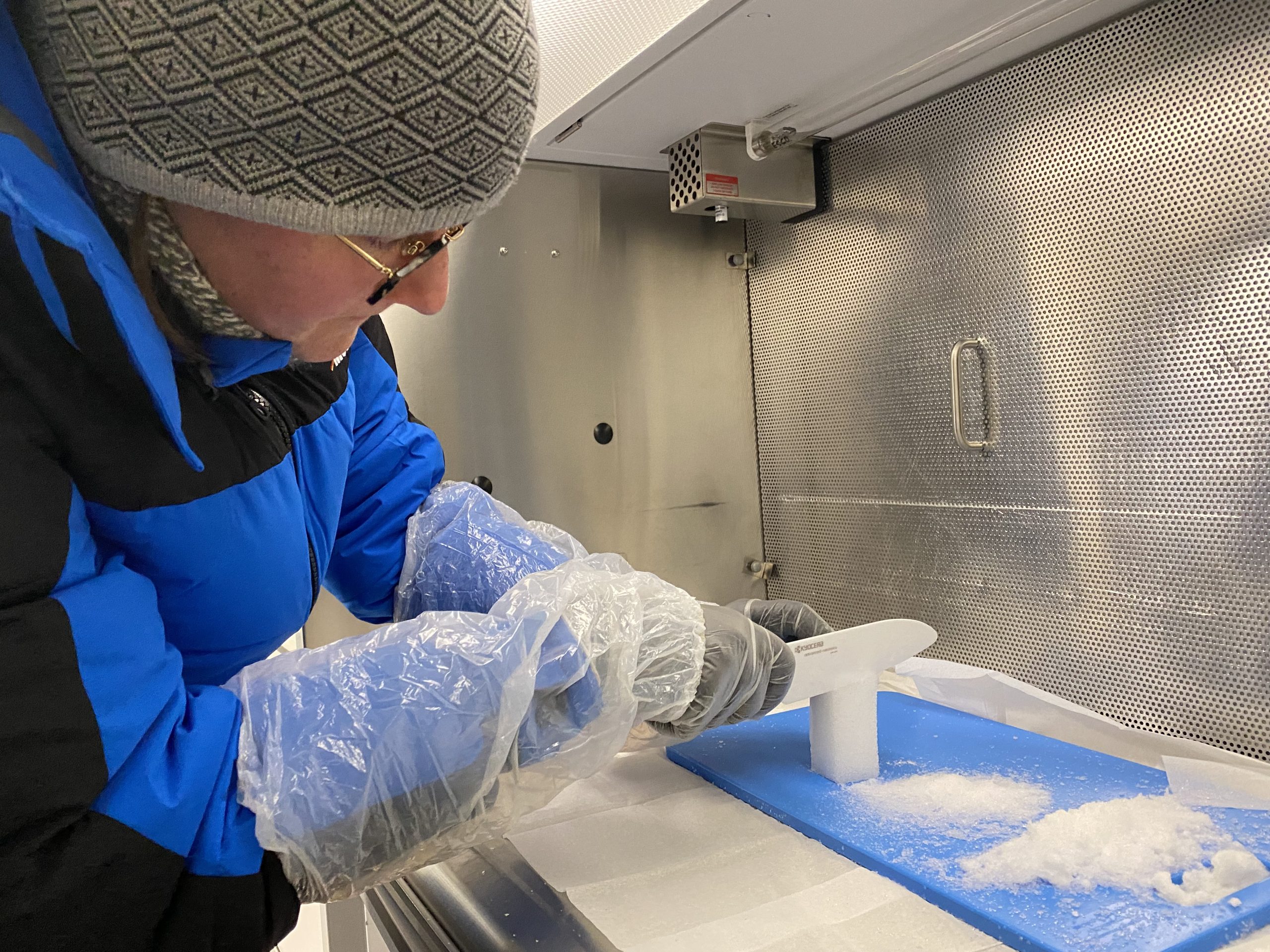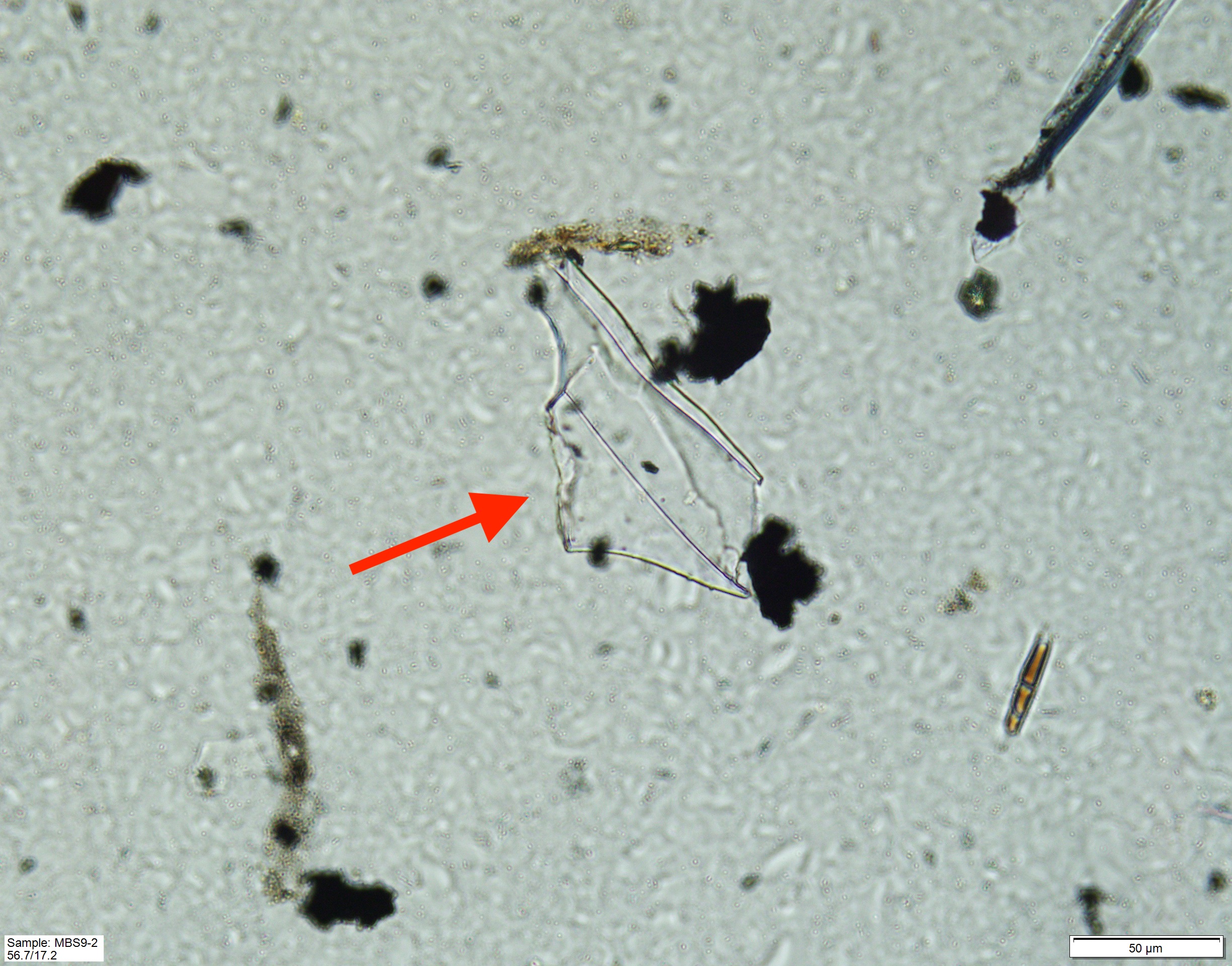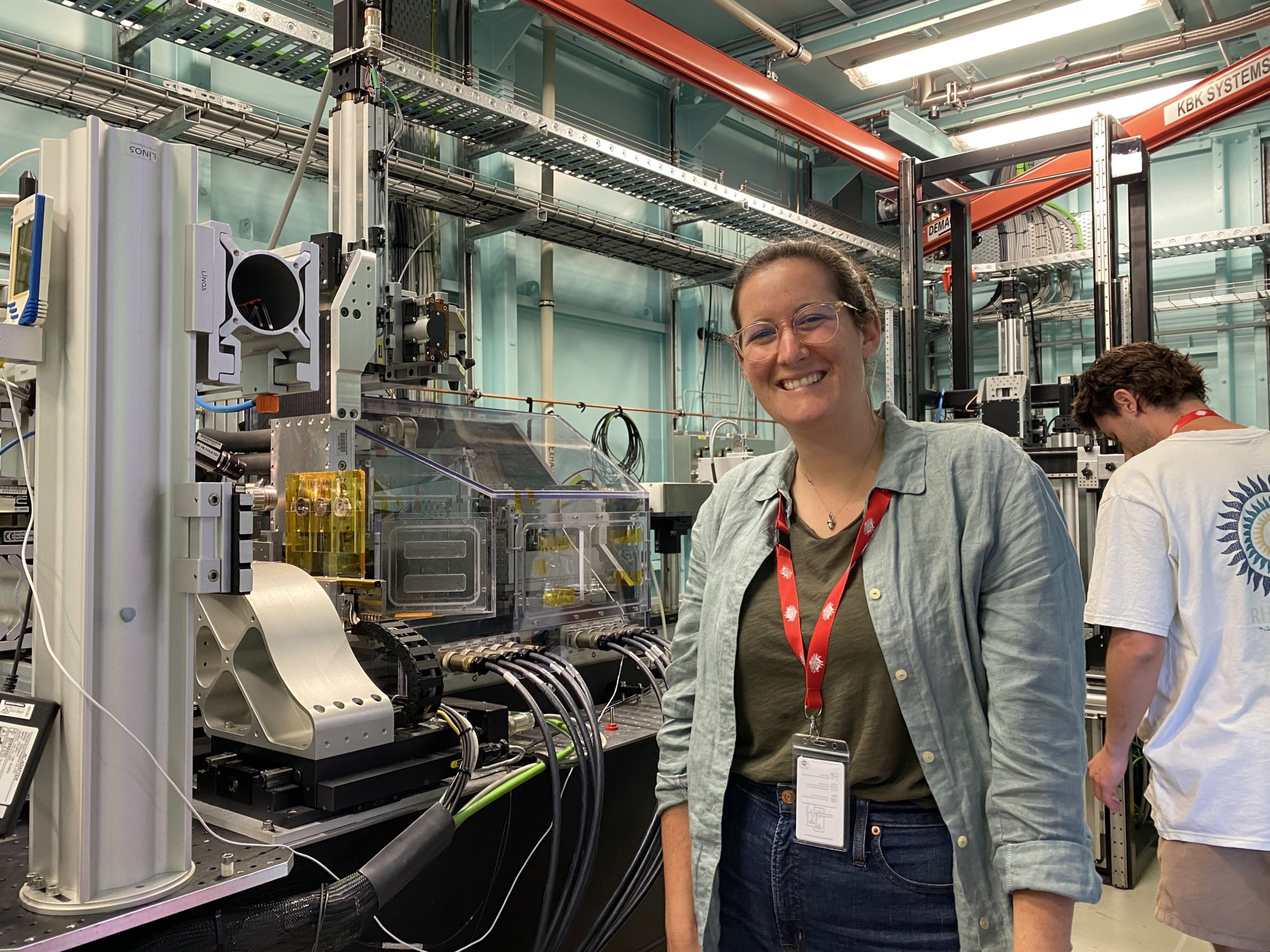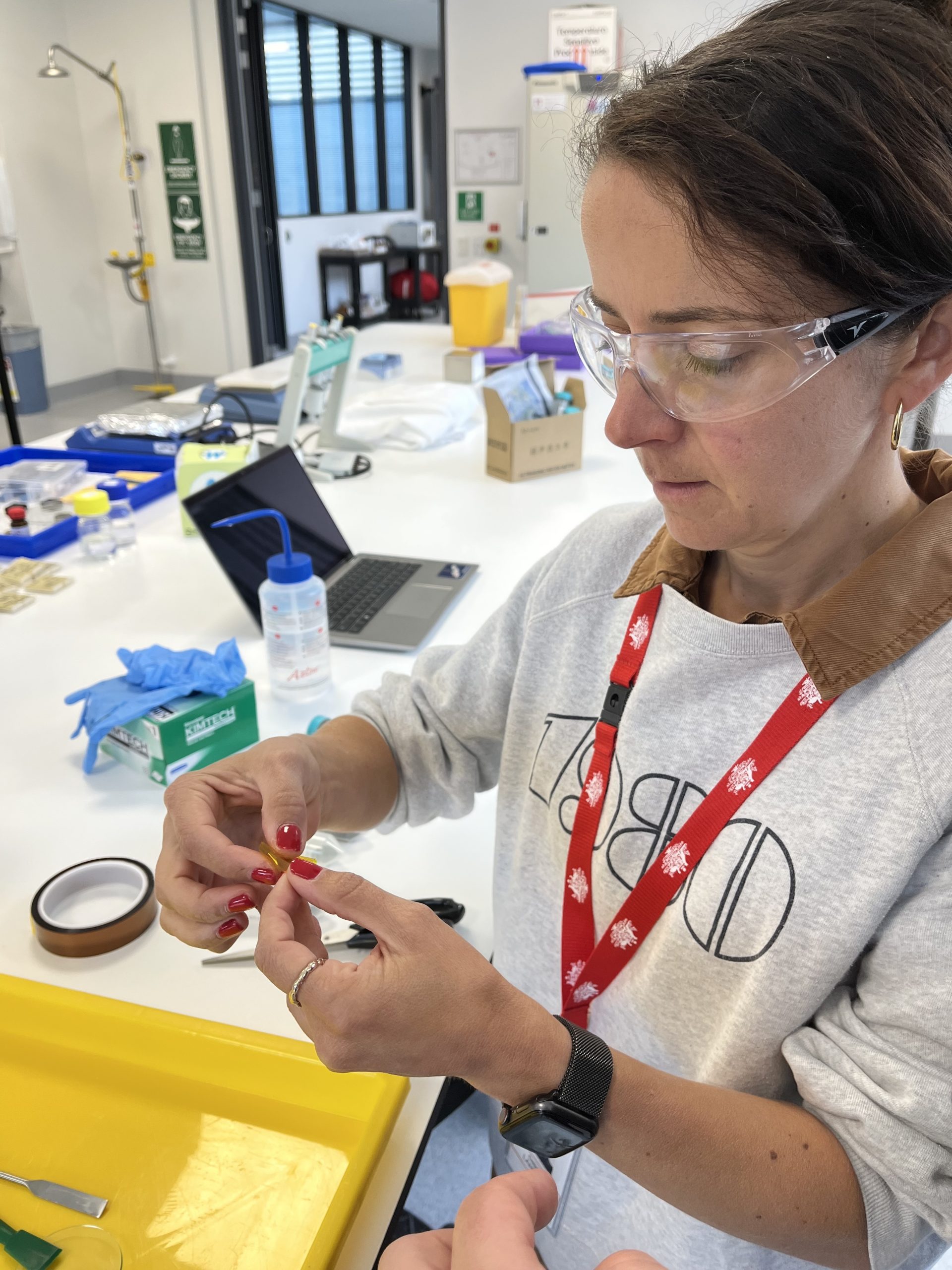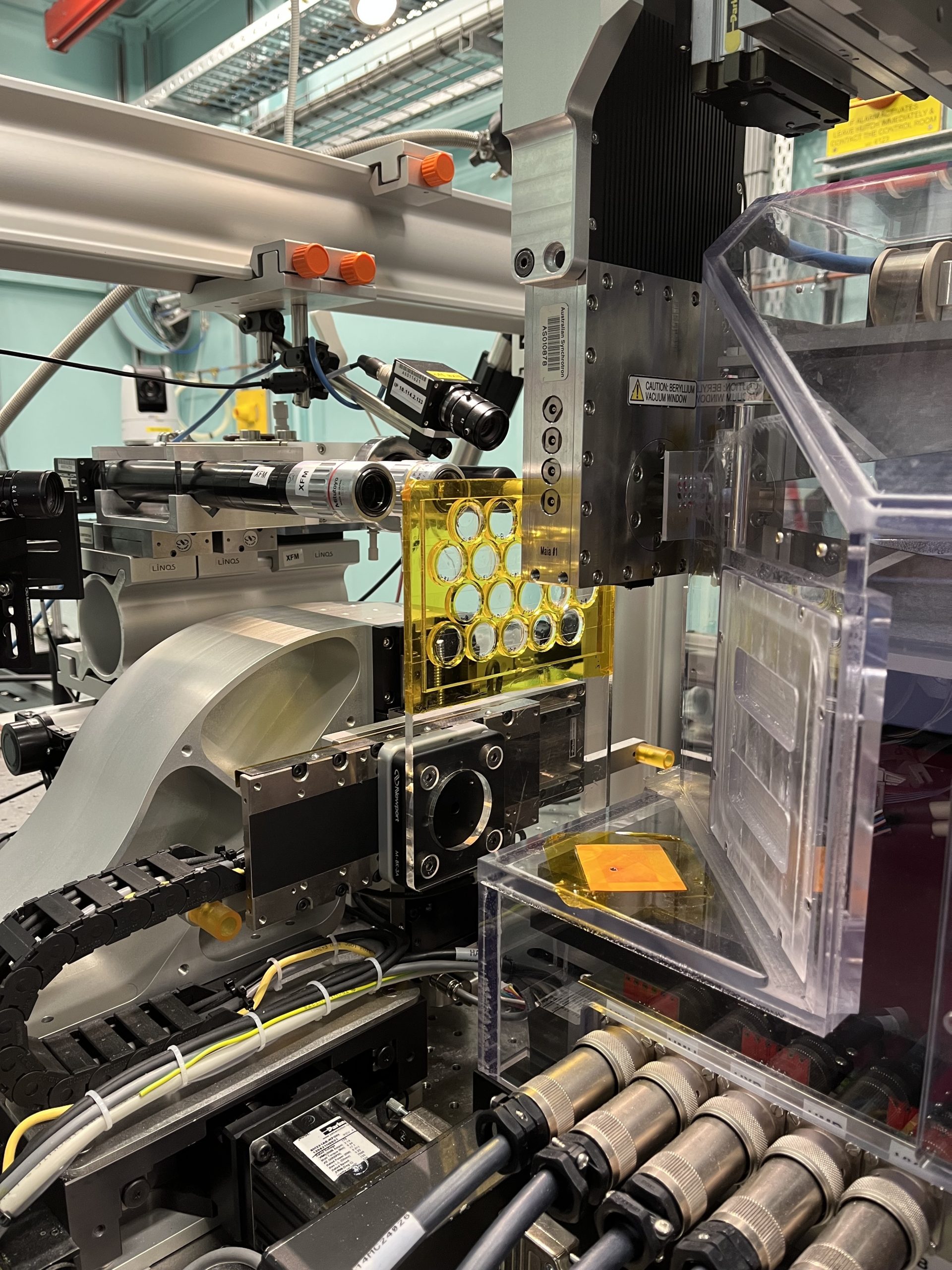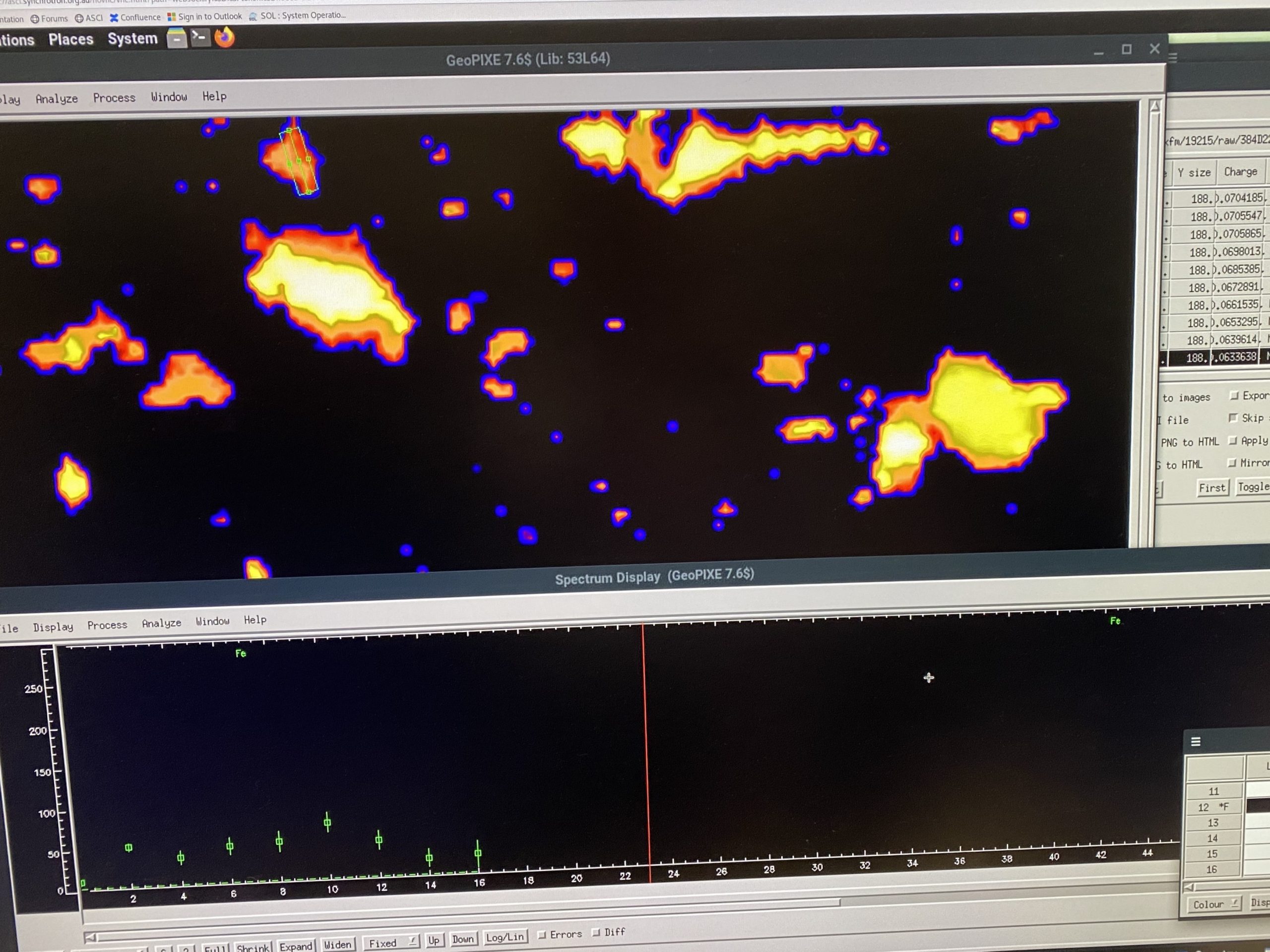Southern Ocean volcanoes under the microscope at Australia’s Synchrotron
2 March 2023
What does Antarctic ice, Southern Ocean algal blooms, Australia’s active volcanoes and a particle accelerator have in common?
Everything, when you’re using an ice core from coastal East Antarctica to extend the volcanic record of Heard and McDonald Islands and see if their fallout is a source of iron fertilising the ocean around them.
Meg Harlan, a PhD student with the Australian Antarctic Program Partnership (AAPP), said that while the volcanoes on Heard and McDonald Islands have poorly observed eruption histories, traces of iron-rich volcanic ash blown towards Antarctica should be preserved in ice.
“Biological productivity in the Southern Ocean is limited by low levels of iron in the water, but the region around Heard and McDonald Islands is home to substantial phytoplankton blooms every year.”
“My research aims to find a link between iron from volcanic activity, iron in the ice core record, and iron fertilising algal blooms,” said Meg.

To the Synchrotron!
Meg took her project to the next level spending a few days at the Australian Synchrotron run by the Australian Nuclear Science and Technology Organisation (ANSTO) in Clayton, Victoria.
She was part of an AAPP team comprising palaeoclimatologist Tessa Vance, ice core research technician Chris Plummer, polar biogeochemist Delphine Lannuzel and geology PhD student Jeremy Asimus. Antarctic volcanologist Jodi Fox from the Institute for Marine and Antarctic Studies participated in the Synchrotron visit remotely.
Synchrotrons are circular particle accelerators that use electrons to produce intense beams of light more than a million times brighter than the sun.
The ANSTO Synchrotron produces X-ray and infrared radiation that is channelled down long pipelines, known as beamlines, into a suite of scientific instruments.
At the Synchrotron, the AAPP team used X-ray fluorescence microscopy to search for traces of Heard Island volcanism in the Mount Brown South ice core from East Antarctica.
Clues in the ice
The key evidence in the ice is iron-rich cryptotephra, specifically, microscopic shards of volcanic glass from ash produced in volcanic eruptions and transported by the wind to the ice sheet.
Meg concentrated these microparticles from the melted ice to analyse their iron content and geochemical composition.
The iron content of the cryptotephra was analysed using X-ray absorption near-edge structure imaging to shed light on the sources and the biological availability of iron for Southern Ocean productivity from Heard Island’s volcano, Big Ben.
AAPP program leader Prof Nathan Bindoff said that their trip is a great example of how AAPP projects help realise the science returns on investment in national research infrastructure.
“This work also demonstrates a smart way to extract the most information we can from our valuable ice core samples,” he said.
The Australian Antarctic Program Partnership is led by the University of Tasmania, with partner agencies CSIRO, Institute for Marine and Antarctic Studies, Bureau of Meteorology, Australian Antarctic Division, Geoscience Australia, Integrated Marine Observing System, and the Tasmanian Government.

